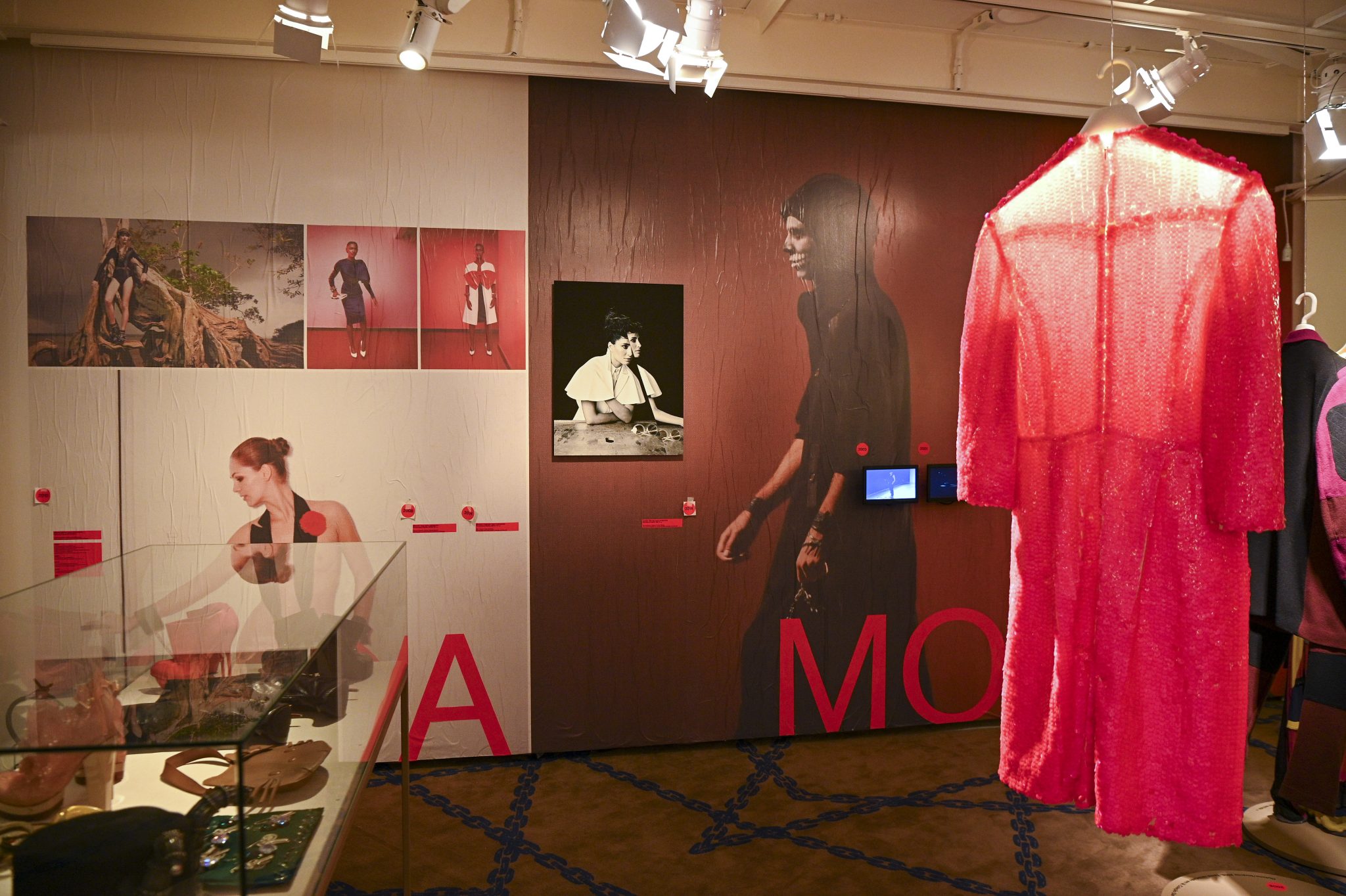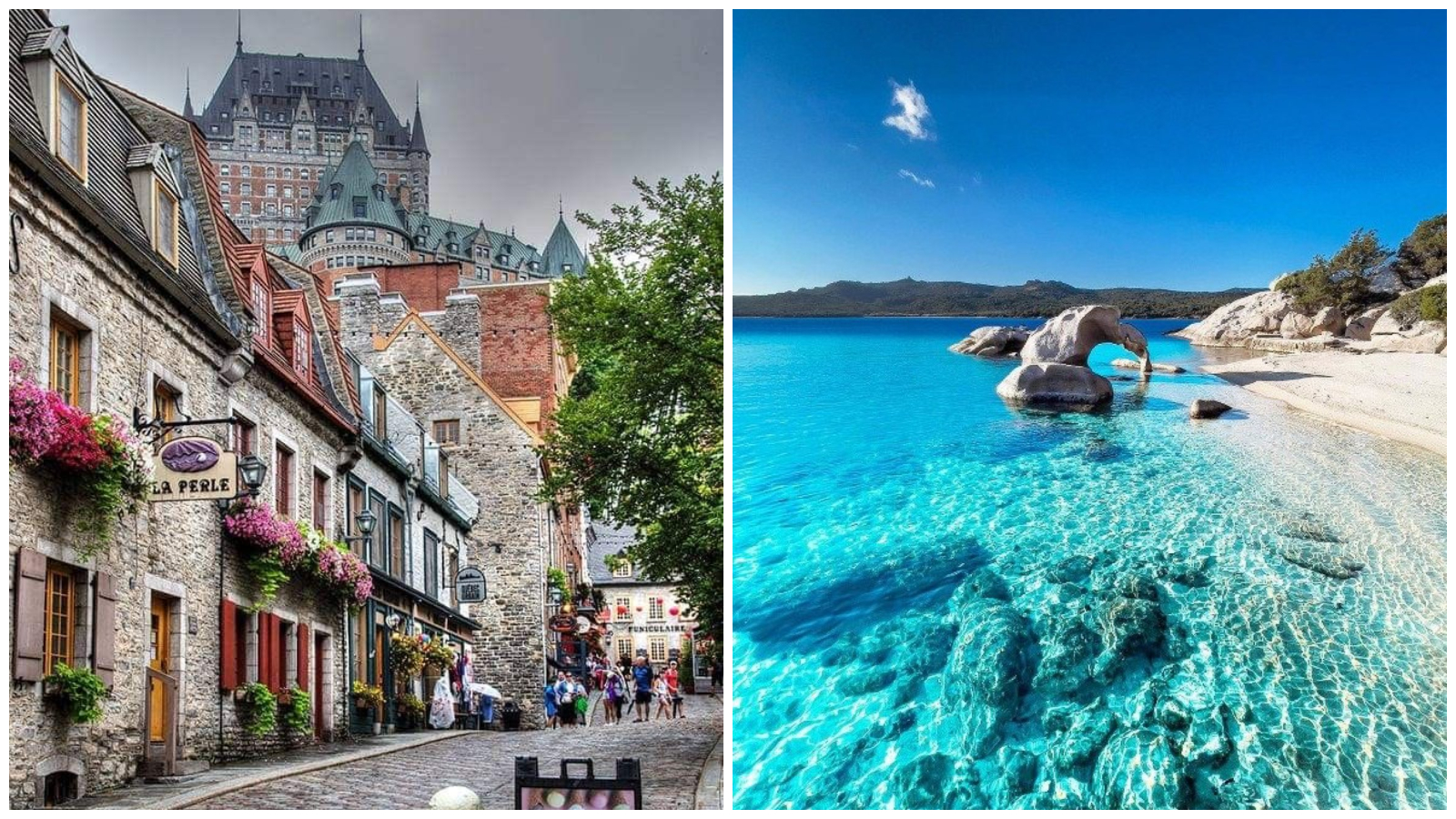Fashion
Transgressive Designs: Curator Maurício Ianês on Brazilian Fashion’s “Enfant Terrible” Alexandre Herchcovitch | Newcity Brazil

Installation view of “Alexandre Herchcovitch: 30 Years Beyond Fashion,” Museu Judaico de São Paulo, 2024/Photo: Luciana Prezia
Alexandre Herchcovitch’s head is a kaleidoscope mixing times, contexts, cultures and references. With every show, we get a glimpse into the multifaceted world of Brazil’s fashion “enfant terrible.” The retrospective exhibition, “Alexandre Herchcovitch: Thirty Years Beyond Fashion” at the Jewish Museum of São Paulo, offers a rare opportunity to explore his universe, which blends Judaism, queer culture, punk, haute couture, nonconformity and transgression, all displayed on hangers. The exhibition features clothes, shoes, bags, hats and exclusive photos and videos from fashion shows, curated by Maurício Ianês, a longtime collaborator of Herchcovitch since their teenage years. “It’s the first time that I didn’t participate in the choices of a work about me. I learned to see myself without talking about myself,” says the stylist.
Alexandre Herchcovitch is one of Brazil’s most influential, celebrated and sought-after fashion designers of his generation. Now fifty-two years old, he remains irreverent in his creations, despite his calm and measured demeanor. However, don’t assume that Brazilian fashion must be tropical, colorful and floral; Herchcovitch is quick to counter: “You can’t stereotype. Punk thrived here. My fashion reflects the experience of a Jewish Brazilian boy from São Paulo.” Regarding his aesthetic, cultural and social references in fashion (and in life), Herchcovitch does not hide his trajectory and the creative process of the son of second-generation Jewish immigrants who took his first steps as a fashion designer after learning sewing from his mother, owner of a lingerie clothing factory, and soon put her ideas into practice by creating clothes for her. One of the dresses he created as a teenager for his mother is on display, as well as other treasures.

Left to right: Maurício Ianês and Alexandre Herchcovitch/Photo: Luciana Prezia
The skull is the hallmark of the Alexandre Herchcovitch brand, and the symbol of transgression and hedonism that a generation has learned to recognize easily. The exhibition showcases the original skull sketch, signed by a teenage Herchcovitch in 1986, years before he entered a Catholic college’s fashion program. During his university years, Herchcovitch created a white dress with a red stain, simulating menstrual blood, for his graduation runway show. This 1993 dress is now a central piece at the Jewish Museum exhibition, illustrating Herchcovitch’s drive to challenge societal taboos. “This dress is significant because it addressed topics like abortion and menstruation, both of which are often treated as misogynistic taboos in society,” says curator Ianês.
In addition to these historical elements, the exhibition presents more than forty looks that date back through his career, including pieces made of latex, a bag in the shape of the character Hello Kitty; the reissue, made exclusively for the exhibition, of five looks from the collection of winter 2012, inspired by the clothing of religious Jews; and a polyamide jumpsuit created especially for DJ Johnny Luxo in 1993. Other pieces and images from this period show Herchcovitch’s expansion into many scenarios that the city of São Paulo has and provides access to, such as electronic music, drag queens, transvestites and a multitude of characters, often nocturnal. Fascinated by the drag queens’ performances, Herchcovitch started sewing for them, and they became his friends, like Márcia Pantera, his muse who performed in the retrospective opening show wearing an outfit created especially for the occasion, and which dates back to the designer’s graduation show, in which Márcia was the main attraction.

Installation view of “Alexandre Herchcovitch: Thirty Years Beyond Fashion,” Museu Judaico de São Paulo, 2024/Photo: Luciana Prezia
In the 2000s, Herchcovitch emerged as one of the main and most influential Brazilian designers, and some of his memorable shows at São Paulo Fashion Week can be seen at the exhibition. His original and hard work, mixed with his idolization in the Brazilian fashion world, took him to the main fashion weeks in London, Paris and New York, as well as dressing people like Björk and Scarlett Johansson, as well as models like Gisele Bündchen, Caroline Ribeiro and Fernanda Tavares, icons of international fashion. And beyond design, one of Herchcovitch’s most impressive experiences was the decision to sell his brand at the height of its success to the InBrands business group, in 2013. “I sold the brand, but I didn’t sell my brain,” said the designer to the press at the time. Ten years after Herchcovitch almost disappeared from fashion, in 2023 he resumed the artistic direction of his brand, which is celebrating its thirtieth anniversary and can be revisited and reviewed in the current retrospective in São Paulo.
Curator Maurício Ianês spoke from Vienna, Austria, where he lives, and told us a little more.
How did you conceive the exhibition design, which puts the clothes and other pieces so close to visitors?
The space in the room is quite limited and I thought a lot about it because I had a lot to show. I wanted to show the full breadth of Alexandre’s work and also his relationship with collaborators. It’s an exhibition that tells Alexandre’s story not in a chronological way because, firstly, I wanted to show Alexandre’s aesthetics, which we no longer see in the latest collections he made, which is something more subversive and draws references to places that are not sophisticated. I wanted to bring all this fragmentation [of AH’s aesthetics] into the exhibition design, the underground references with haute couture, so that’s why we made the choice to show the photos on paper glued and wrinkled on the walls, and also this immersion in a large fragmented kaleidoscope. I preferred to preserve a characteristic of Alexandre’s work, which people don’t have this reference to today and is a more punk and subversive approach that was part of his history on various issues, at various times and still today.

Installation view of “Alexandre Herchcovitch: Thirty Years Beyond Fashion,” Museu Judaico de São Paulo, 2024/Photo: Luciana Prezia
Among the forty looks shown in “Alexandre Herchcovitch: Thirty Years Beyond Fashion,” which ones would you highlight and why?
I highlight a leather jacket that is combined with pants, which are from a winter collection inspired by agricultural workers. It’s a woolen garment that I think is important because of the modeling. In addition to the inspiration he sought from agricultural workers who are from a lower [economic] class, the construction of the piece is a very important part of Alexandre’s development. He looks for new compositions and invents pieces, like the pelerine with pants that became a jumpsuit with a bare back. Experimenting with pieces is very important in Alexandre’s work. And I highlight the latex dress that is displayed in a showcase [lying down and without a hanger] because it is one of the first experiments we did with latex; it was a very important development in Alexandre’s career. I studied art, and in sculpture class we learned how to make molds with latex, and I took this idea to Alexandre. Over the course of his career latex evolved a lot and became very sophisticated, but at the beginning, it was very rustic, and natural latex mixed with fabric had the appearance of melted skin. It seemed like the clothes melted into the skin. It is important because it marks a period in Alexandre’s career when he had a very peculiar vision.
Why are Alexandre Herchcovitch’s clothes so successful?
In addition to anti-racism and gender issues, Alexandre puts transsexual friends on the catwalk, ordinary people, different bodies, men in high heels… these are very political issues: gender, racialization, racism and also class, because he always wants everyone in the world to have access to some of his creations, so there’s the cheap T-shirt and the expensive dress. And there is an aesthetic issue too, because he has always been very restless in his aesthetic research and wanting to challenge the norms and standards of aesthetics and silhouettes, and this maintains the strength of his older work. Today, we see these political issues very present in fashion, art and society. Even with all this controversy, he presents very well-finished products.
Alexandre Herchcovitch: 30 Years Beyond Fashion
Through September 8
Jewish Museum of São Paulo
Rua Martinho Prado, 128–São Paulo, SP










